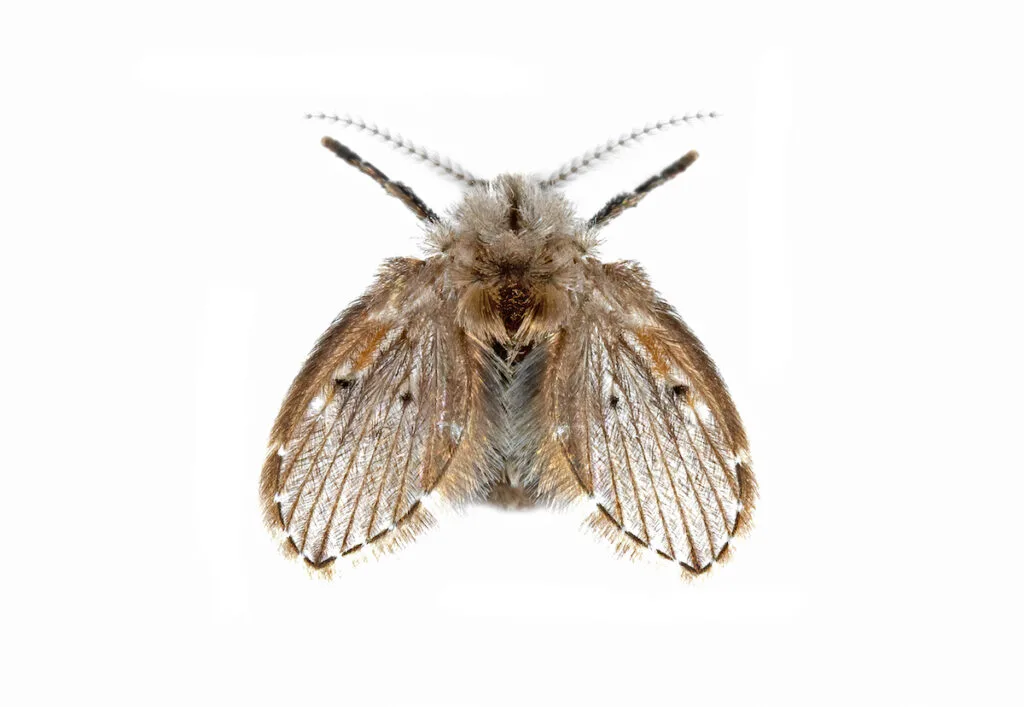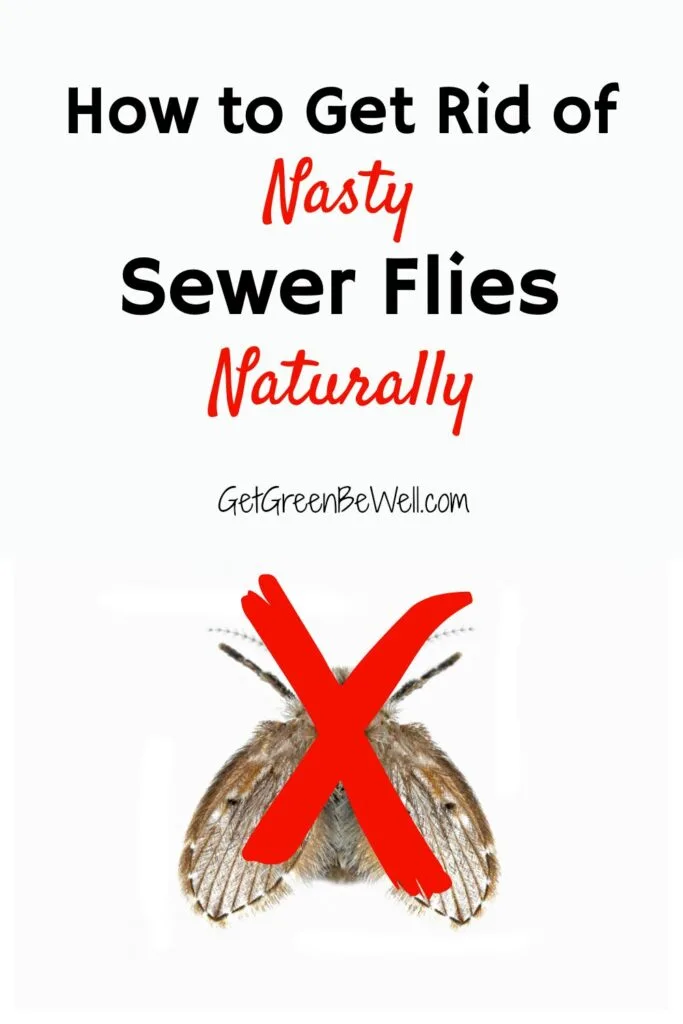What’s the difference between normal flies and sewer flies? Well, you usually don’t have to deal with normal flies while showering or brushing your teeth which is what makes these drain flies so disgusting. Here’s how to get rid of sewer flies without any nasty chemicals in your home.
What Do Sewer Flies Look Like?
These tiny insects (just about 1/8 of an inch) are different than the type of flies that buzz around your picnic table.

They don’t look like normal flies. They have small, round wings. Plus, they tend to be grey or brown in color. Both the wings and body can be fuzzy. Their wings look too big to be attached to their body.
In fact, sewer flies don’t even really fly at all. They just kind of jump around. Which is interesting, because somehow these bugs have a variety of names that make you think they fly in the air, including:
- Sewer flies
- Moth flies
- Drain flies
- Filter flies
- Sink moths
- Sewer gnats
What Causes Drain Flies?
Why do these insects like sewers and drains? The tiny bugs like standing water. So anyplace where water accumulates is fair game for the bugs, including:
- Sinks
- Showers
- Floor drains (laundry room, garage, etc.)
Drain flies also like to have a source of food where they live and breed. That could be actual food (such as food bits in a kitchen sink) or bacteria (the kind that can accumulate in a shower drain).

How Can I Tell If I Have Sewer Flies?
The first step is to see tiny flies hanging out on the walls or near a drain.
The easiest way to determine whether your insect problem is actually sewer flies is to put clear packing tape or masking tape over the drain opening. With the sticky side down.
Apply in an X shape, because you do want some air flow getting into the drain. And be sure to dry off the drain and surrounding area before applying tape.
Do this at night when you are not using the sink or shower. It’s more convenient (no one will accidentally use the shower), plus the sewer flies are actually nocturnal. Which means they are more active at night and will likely come out of the drain then.
If there are flies on the tape when you remove it in the morning, then you know they were trying to come out of the drain. And you have drain flies.
Do Drain Flies Bite?
Nope. These drain flies are annoying (just like fungus gnats) but they are not dangerous. They do not bite. You do not have to worry about moth flies transmitting disease, unlike mosquito bites.
How to Get Rid of Drain Flies Naturally
These tiny insects are easy to get rid of with natural ingredients. Just like it’s easy to get rid of ants with simple ingredients.
- First, start with cleaning basics. Clean the shower or sink, and pay attention to the drain area. Scrub it with a sponge and a good cleaning product that will get rid of debris they might be feeding on. (I suggest using vinegar, here’s what type of vinegar to clean with).
- Next, clean the actual drain. Use a small, narrow wire brush (also called a pipe snake or pipe brush) to go into the drain and unclog the debris and gunk that might be in there and acting as a food source for the drain flies. (You know, the gross, slimy stuff that makes you nauseous when you have to pull it out of the clogged drain? Yep, that’s what drain flies live in.)
- Consider clearing the P-trap to clear out any more debris you can’t get to with a brush.
- The easiest way to try to kill the flies is to pour boiling water down the drain to kill larvae about to hatch. This is also an easy way to unclog the drain. Use at least 2-4 cups of boiling water. However, every drain and surface is different, so be careful when using boiling water in your plumbing.
- Want more cleaning power? Combine 1 cup baking soda and 1 cup vinegar in drain. It will fizz. An hour later, pour 2-4 cups of boiling water down the drain to wash away the solution. (Hint: This recipe is often suggested as a non-toxic drain unclogger. I have never found a baking soda and vinegar solution to work with heavily clogged drains. It’s more of a maintenance remedy. However, it could be effective in killing sewer flies if you don’t have a very clogged drain.)
- Another solution is hydrogen peroxide. Just like peroxide kills out bacteria and germs from a wound, it can kill the bacteria that sewer flies are feeding off of. (This super strength hydrogen peroxide is more powerful than the drugstore brands.)
- Still can’t get rid of those sewer gnats? Then it’s time to really clean out that drain and remove anything that the flies are using to live in. Will Drano kill drain flies? Well, kind of. It makes sense that the toxic solution with a lot of health warnings will kill tiny living organisms. However, it’s also removing the food source which will in turn kill the flies. Instead of Drano, use an enzyme drain cleaner, such as those highlighted below.
✅ This drain treatment is specifically formulated for sewer flies and contains citronella to kill the larvae.
✅ ECOS has an all natural enzyme drain cleaner that cuts through buildup.
Will Bleach Kill Drain Flies?
Just like Drano is a very toxic substance to use to kill a tiny bug, bleach is a very caustic substance to use.
Drain flies and sink moths can be killed with other products that don’t have harmful fumes. Bleach is surprisingly not a great solution at killing drain flies. It doesn’t remove the slime and debris where sewer flies live in. It just kills bacteria, which is just one part of the sewer flies problem.
Bleach doesn’t totally kill sewer flies larvae, either.
How Quickly Can I Get Rid of the Bugs?
These drain flies can live for up to 3 weeks. So you’ll have to keep killing the ones that are already hatched.
Eggs can hatch every 48 hours. So the quicker you start working on killing the flies, the quicker you’ll put a stop to a new generation of sink moths starting.